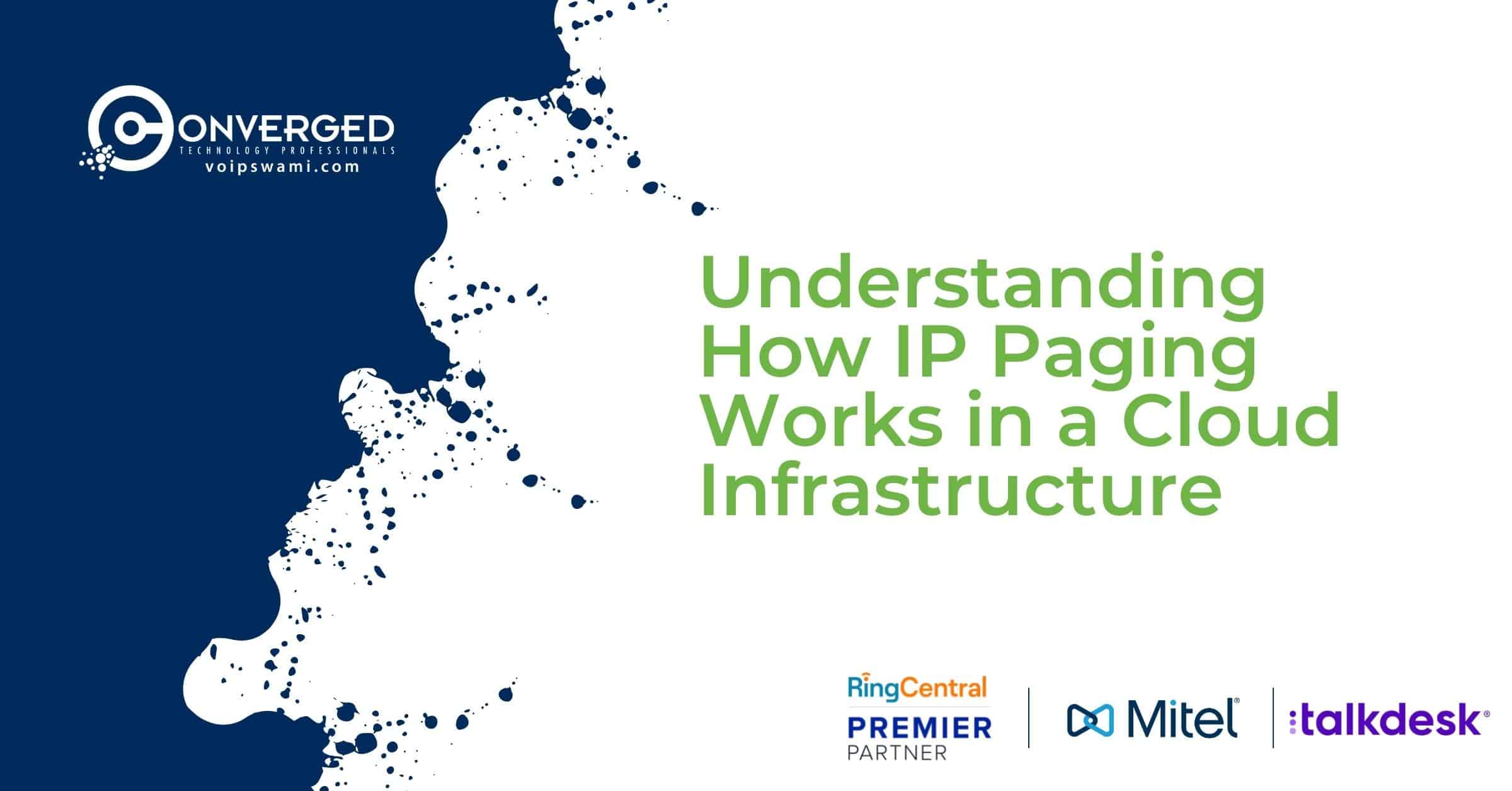
With the rise of digital technology, you may think that overhead paging has gone the way of the VCR. Before cell phones, companies primarily used overhead paging to alert workers of an incoming phone call. Obviously, there's not a significant need for that any longer.
Today, warehouses, restaurants, grocery stores, schools, hospitals, retail stores, and more use public address communication for various scenarios, including mass notifications through automated and live announcements, emergency messaging, security alerts, and customer assistance. Some companies even use paging functionality to create ambiance by broadcasting background music overhead.
Most of today’s paging technology works off the same aging systems as traditional premise-based telephony, posing some challenges for the future. Thanks to advancements in cloud-based communications, there is a solution.
Here's what you need to know about traditional overhead paging versus how IP paging works in a cloud infrastructure:
How Does Traditional Overhead Paging Work
Before we talk about how IP paging works in the cloud, let's cover the basics of traditional overhead paging. One of the most important things to remember is that the general technology isn't changing, but the delivery system is.
Traditional overhead paging relies on the framework of your legacy PBX. Therefore, it's getting more difficult and expensive to maintain because the equipment, hardware, and other peripheral gear are becoming obsolete.
Conventional paging consists of a self-enclosed system communicating to individual speakers installed in numerous broadcast locations. The speakers themselves are relatively inexpensive, but they must connect through a physical cable leading back to an amplifier to function. That's a lot of wiring to deal with, and the amplifier might be located far away or even through heavy sheetrock, which could be very expensive to install and maintain.
If the speakers or wiring malfunctions at any time, you have to find a vendor to fix the issue. That may not be easy because legacy phone systems are aging out of the market with the advent of cloud-based communication technologies. Many providers have either evolved their business to cloud communication or may have gone out of business altogether.
Even if you find someone who can help, the cost may be prohibitive, the parts may not be available, and the wait times may be lengthy.
So, what's a company that utilizes paging to do? That's where IP overhead paging comes in.
What is IP Paging
IP paging works through Voice over Internet Protocol (VoIP), where the speakers are directly connected to a network instead of individually back to an amplifier via copper wiring.
Adding or moving speakers is easy. Instead of running wires to an amplifier, speakers are activated on the network as just another IP device on the system, making them more cost-effective over time. While IP speakers are more expensive than their wired counterparts, they're a more prudent investment as they are much easier to install and maintain overall.
We're not going to get all technical here, but we do think it's vital for you to understand a few basic concepts that explain why IP paging is such a worthwhile investment:

Session Initiated Protocol SIP
Every device on the network, including speakers, requires a support agreement and registration fee. However, cloud paging speakers can communicate to your network using SIP, which is a standard way for digital devices to talk to each other.
Most businesses that use overhead paging will be utilizing multiple speakers, but individual agreements and fees for every speaker could be cost-prohibitive. It wouldn't be practical to register each speaker as a device endpoint, so modern communication systems use SIP and multicasting instead.
Multicasting
Your installer can configure your SIP gateway to multicast, meaning the gateway becomes the primary device and the only one needing registration. The other speakers become secondary, saving you multiple fees for each.
Secondary speakers can't transmit by themselves as they'll act off your primary SIP gateway. Still, if you need broadcast capabilities for distinct locations, you can set up a SIP gateway for each.
The best part is you can switch to IP overhead paging before having a unified communications (UC) package in place. If you are still using on-prem hardware-based telephony, IP overhead paging will work independently of that system.
Why IP Paging is Beneficial for Your Business
As we discussed, maintaining on-prem telephone systems is becoming a considerable challenge as storage space for hardware is at a premium, and supporting such platforms is costly in capital and labor. Not to mention, many legacy PBX communications platforms are near or at the end-of-life stage, making continued upkeep almost impossible.
Switching to a cloud platform from an on-prem telephone system is beneficial for businesses as the above challenges don't apply to systems operating in the cloud. That goes for IP overhead paging, too, since it doesn't depend on that same antiquated equipment.
Here are some additional benefits of IP paging:
-
Uncomplicated: Easy to manage broadcasts and equipment from a software-based system in the cloud.
-
Reliable: Most IP paging uses PoE (Power over Ethernet), an uninterruptable source that operates even when the power goes down.
-
Cost-Effective: A cloud-based platform is less expensive to install and maintain over time; multicasting saves multiple licensure and registration fees.
-
Scalable: Easily reconfigure or add additional broadcast points in the cloud depending on business needs; no individual speaker wiring needed!
-
Flexible: Implement IP paging before or during migration to a cloud-based communications platform—whichever works best for you.
Real-Life Examples of Overhead IP Paging
Examples of IP paging in daily business are numerous. Industry and manufacturing use it to warn of workplace hazards like spills and breakage, for overhead weather alerts, zone paging when docked goods are ready to be loaded or unloaded, and scheduled notifications in common areas via scrolling message board.
Government entities use overhead paging for zone lockdown notifications in detention centers, general office announcements such as meeting alerts, and precautionary safety warnings to government building workers.
The healthcare industry utilizes IP paging for code emergency notifications, hands-free intercom communication between the operating room and hospital staff, patient-relevant pages and announcements, and responsive care between hospitalized patients and caregivers.
Retailers have long used paging for in-aisle assistance, security alerts, multi-site communication, and scheduled announcements.
IP Paging Providers
Now that you have a solid overview of IP paging, you might have questions or need further information. If you'd like help weeding through the design, configuration, and installation options and providers, we'd be happy to help. Contact us to find out more about IP overhead paging.
If you enjoyed this article you may also enjoy:
